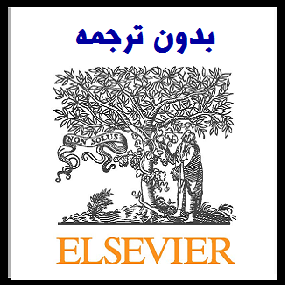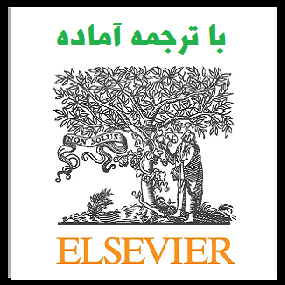مقاله انگلیسی همبستگی و عدم تقارن ارزش در برنامه بازاریابی رابطه ای (2018 الزویر)


| عنوان فارسی مقاله | همبستگی ارزش و عدم تقارن ارزش در برنامه های بازاریابی رابطه ای |
| عنوان انگلیسی مقاله | Value synergy and value asymmetry in relationship marketing programs |
| نمونه مقاله انگلیسی | Introduction
The business-to-business marketing literature has long recognized that relationship investments enhance relationship performance (Palmatier, Dant, Grewal, & Evans, 2006, Palmatier, Gopalakrishna, & Houston, 2006, Palmatier, Scheer, Houston, Evans, & Gopalakrishna, 2007). Practitioners, however, are less certain about whether they gain much value from their investments in building close inter-organizational relationships with customers, as they increasingly realize that “close relationships are not always synonymous with good relationships” (Anderson & Jap, 2005, p.75). The high failure rate (30%–۵۰%) of close relationships, such as joint ventures or alliances, between firms and either their suppliers or customers has led managers to reconsider the linear view of their relationship building efforts (Anderson & Jap, 2005). Moreover, the rising opportunistic behavior in today’s complex supply chains has created the risk that one party in a dyadic buyersupplier relationship can gain greater value at the expense of the other (Vandenbosch & Sapp, 2010). Such opportunism puts pressure on supplying firms to consider not only how much new value their investments can create for the relationships, but also how much value they can receive compared to their partners. Given the high costs of investing in business relationships, it is critical for managers to effectively tackle these two challenges; however, prior research reveals a gap to the extent that it has not completely explained this important phenomenon. A review of the extant literature on buyer-supplier relationships reveals three notable limitations. First, few empirical studies address the complexity of how relationship investments affect relationship performance. On one hand, building on the reciprocity norm of social exchange theory, previous research has focused on the positive linear effect of supplier’s relationship marketing programs (including financial, social and structural programs) on customer-specific return on investment (Palmatier, Dant, et al., 2006), and supplier-buyer relationship quality (Palmatier et al., 2007). On the other hand, transaction cost theory posits that relationship investments can create a fertile ground for harmful opportunistic behavior (Williamson, 1975), and “can make it difficult to walk away” (Anderson & Jap, 2005, p.76). The literature on relationship marketing is unclear about how these two contrasting theories together explain the effect of supplier’s relationship marketing programs on relationship performance. Second, although business relationship value involves two important facets, value creation and value distribution (Fang, Palmatier, & Evans, 2008), prior research has largely focused on value creation instead of value distribution. Relationship value is “the trade-off between the benefits and costs” each party perceives in a dyadic relationship, “taking into consideration the available alternative relationships” (Ulaga & Eggert, 2006b, p.128). Indeed, the focus has been on a single side of the relationship, either the buyer or the supplier, rather than the dyad (Fang et al., 2008; Wagner, Eggert, & Lindemann, 2010). Unfortunately, when the party making relationship investments receives less value than the invested-in party, this difference in the distribution of value between the two parties can be a sign that value is being created for one party at the expense of the other. Third, prior research has ignored the contingency effect of relationship age to which the nonlinear effect of relationship building efforts might be subject. Relationship age reflects the length of time two parties have interacted with each other (Palmatier, Dant, et al., 2006). Previous studies consider relationship age to be a solid proxy reflecting relationship closeness and stability (Kumar, Scheer, & Steenkamp, 1995a; Liu, Li, Tao, & Wang, 2008; Stanko, Bonner, & Calantone, 2007) and point out that as a relationship evolves, trust, commitment, control, and other relational factors will change (Anderson & Weitz, 1989; Jap & Ganesan, 2000; Liu, Su, Li, & Liu, 2010). |
| سال انتشار | 2018 |
| ناشر | الزویر |
| مجله | مدیریت بازاریابی صنعتی – Industrial Marketing Management |
| کلمات کلیدی | برنامه های بازاریابی رابطه ای، ارزش ارتباطی، منحنی، ارزش آفرینی، عدم تقارن ارزش |
| کلمات کلیدی انگلیسی |
Relationship marketing programs, Relationship value, Curvilinear, Value creation, Value asymmetry |
| صفحات مقاله انگلیسی | 12 |
| مناسب برای رشته | مدیریت |
| مناسب برای گرایش | بازاریابی |
| توضحیات | این مقاله انگلیسی جدید بوده و تا کنون ترجمه نشده است. جهت ثبت سفارش ترجمه از لینکهای زیر استفاده نمایید. |
| دانلود مقاله انگلیسی | ○ دانلود رایگان مقاله انگلیسی با فرمت pdf (کلیک کنید) |
| سفارش ترجمه فارسی | ○ سفارش انجام ترجمه و تایپ این مقاله (کلیک کنید) |
| سایر مقالات این رشته | ○ مشاهده سایر مقالات رشته مدیریت (کلیک کنید) |




